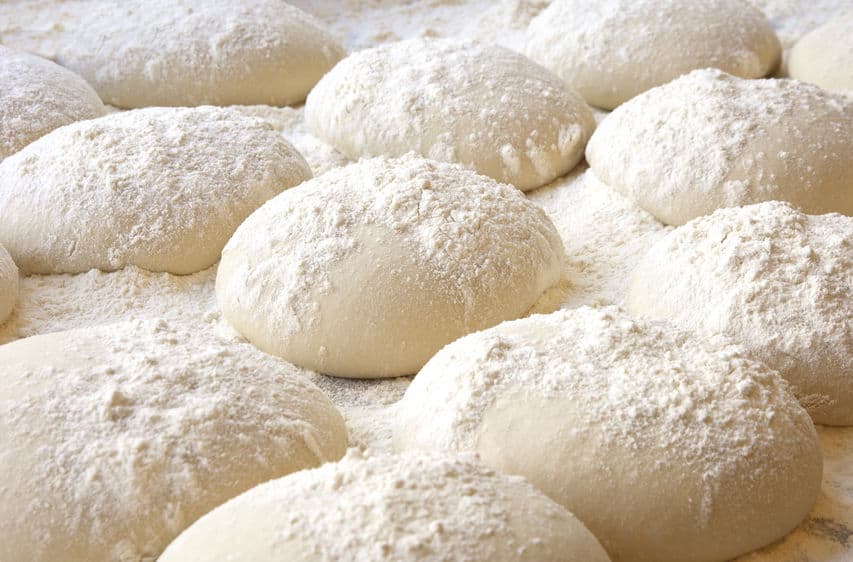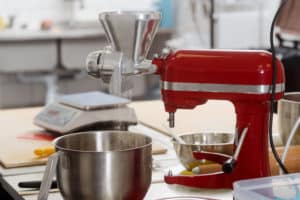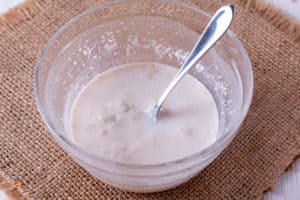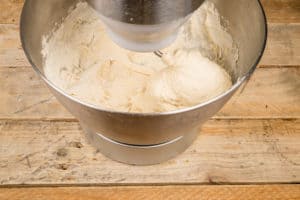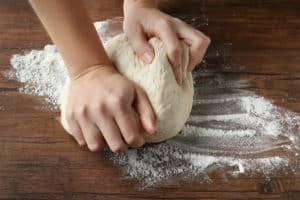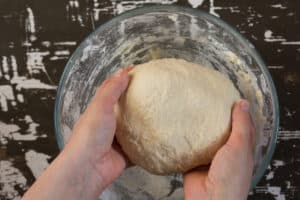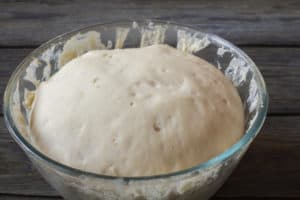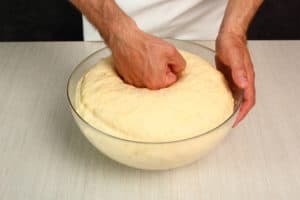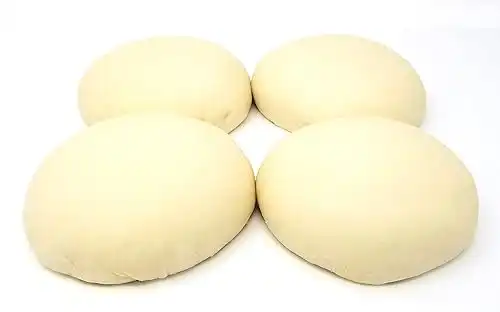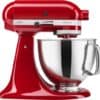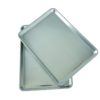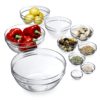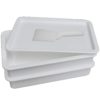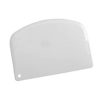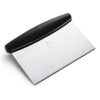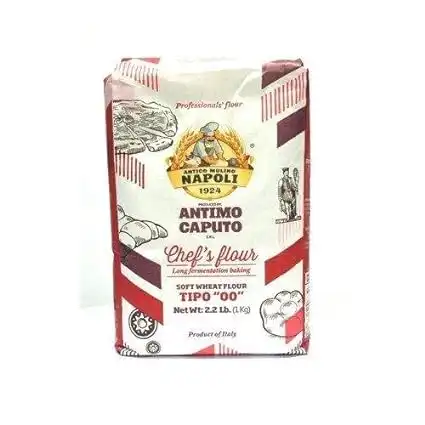Learn How to Make the Perfect Dough Balls
Ok, here it is, the Neapolitan Pizza Dough Base Recipe, the foundation of all pizza-baking techniques. The one and only that serves as the cornerstone of any pizza you prepare.
The one that can become any other pizza-style dough with the addition of a couple of ingredients.
The one that can transform itself into any shape; could be circular, square, rectangular, and if you are just starting to bake pizza at home, freeform.
The one that even changes its name during the cooking process. It starts as a creamy white pillow-mass of “dough” and becomes the most amazing “crust” you’ve ever had.
What is it?
Neapolitan Pizza Dough
With only four ingredients; flour, water, yeast, and salt, the pizzaiolos in Naples, Italy, way back when; transformed what their Greek friends called “Plakous” or “flatbread” into this magical piece of work that has set the precedent of what is commonly known today as “pizza”.
Today, their version of the authentic Neapolitan dough must comply with specific criteria to be considered a true Neapolitan dough. Among the requirements are:
- It must be prepared with 00 Flour
- The use of fresh yeast
- Mixing the dough with “Mother Yeast” or starter
We’ve taken a modern approach to pizza making while keeping a sense of tradition. We studied and reinvented the recipes created by pizzaiolos in Italy, who dedicated their lives to perfecting pizza, and adapted them to a homemade version.
It certainly can’t be considered a “True Neapolitan Dough Recipe” as it does not qualify to be considered as one, but it’s remarkably close.
In our Neapolitan Base Dough Recipe, we keep the same four essential ingredients: flour, yeast, water, and salt, and customize them so you can have similar results at home.
This is a base recipe that can be adapted to any other pizza style. It only takes 20 minutes of hands-on time. Just give it a day of fermentation for a great flavor, and you are done. That’s it!
So, let’s get started.
Temperature & Baking Time
Note that our recipes are shown for a normal kitchen oven in which temperatures reach up to 500°F degrees.
For best results, pizzas should be baked in ovens that reach from 800°F to 950°F degrees. If you are using a wood-fired oven at a higher temperature, the bake time should be reduced by 5 to 7 minutes.
Recipe Details
Flour
An authentic Neapolitan dough must be made with Italian 00 Flour (double zero or type 00). Double zero is a designation that indicated the fineness of the grind, on a scale going from 2 (coarse) to 00 (finest). Double zero flour is milled from soft wheat, which has less elastic gluten than hard wheat.
The result is a tender dough that requires a light touch when you’re working with it. If you can’t find King Arthur bread flour, look for another bread flour that has about 12.7% protein.
Yeast
Authentic Neapolitan pizza is made with fresh yeast that is combined with flour and water to make a starter or preferment. The starter is mixed with the rest of the flour and the remainder of the water to make the dough.
Fresh yeast is not only challenging to find these days, but it is also perishable. It doesn’t last long. So, for home use is not recommendable.
In our recipe, we use active dry yeast. It is not necessarily faster, but it gives a sense of security. Italian 00 Flour is relatively expensive compared to all-purpose flour. So, you don’t want to waste a single bit of it.
When using active dry yeast, you activate the yeast first, then combine it with the rest of the ingredients. By doing this you make sure your yeast is alive.
If you were to use instant, which you can. You mix the flour, the yeast, and water and let sit. If the dough doesn’t rise, the yeast was dead, and you must discard all your flour and start again. Bummer!
Water
You can certainly use tap water to make your pizza dough if that water is good to drink. Bottled water will perform better, just try to avoid mineral water, as is not recommended for pizza dough.
Salt
Fine Sea Salt will taste and dissolve better than table salt. You still can use table salt, but keep in mind that it can change the taste of your crust as regular table salt has an iodine taste.
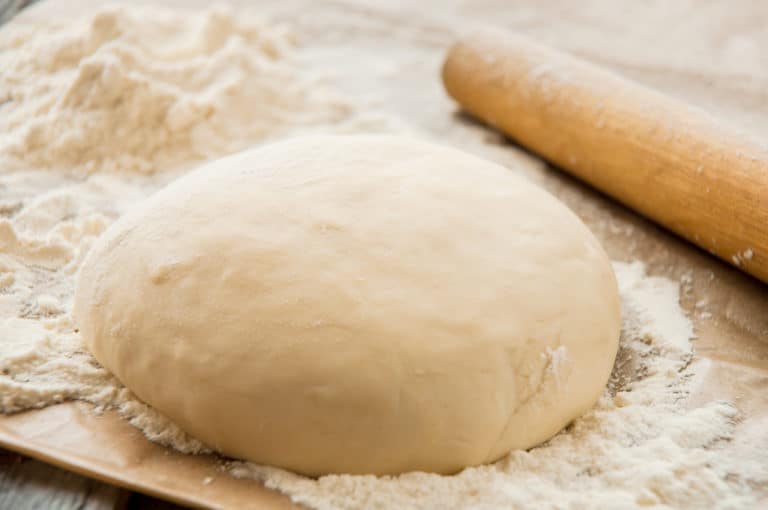
Neapolitan Dough Base Recipe
Makes 3 – 12-inch pizzas
EQUIPMENT
Stand Mixer
Digital Scale
Mixing Bowls
Bench Scraper
Round Dough Scraper
INGREDIENTS
500g 00 Type Flour or Bread Flour
325g Water
5g Active Dry Yeast
10g Fine Sea Salt5g Active Dry Yeast
Set all the ingredients in front of your work area. This is what the French call “Mise en Place” or everything in its place.
When everything you need is in place you will save time as you don’t have to scramble looking for things that you need.
DIRECTIONS:
Prepare the Dough
ACTIVATE YEAST
- Separate 20 grams of water from the total water and heat it up to 95° – 105°F.
- Mix the lukewarm 20 grams of water with the yeast together and whisk them in a small bowl and let it sit for 10 to 15 minutes.
When the activation period is over, the mixture should be bubbly. If not, the yeast is dead, discard the mixture, and start again with new yeast. If you are using Instant Yeast, you don’t need to activate the yeast. Mix the flour directly in with the yeast.
MIX THE DOUGH
- Attach the dough hook to the electric mixer.
- In the bowl of the electric mixer, mix the flour with the yeast mixture, and the remainder of the water and mix on low speed until the dough comes together about 1 minute. The dough will be stiff while mixing.
- Add the salt to the mixture and mix for 1 minute.
KNEAD THE DOUGH
- Knead the dough in the mixer on low speed for 5 – 7 minutes.
- Switch to medium-low speed and mix for another 2- 3 minutes. Total kneading time should be from 7 to 10 minutes. The dough should come together into a big ball of dough attached to the dough hook.
- Detach the mixture from the dough hook and the walls of the mixing bowl and form one big mass of dough. You can leave it in the same mixing bowl.
FIRST FERMENTATION
- Cover tightly and let the dough ferment in the refrigerator until it proofs and almost doubles in size, for about 1 to 1 ½ hrs. The ideal temperature for the first fermentation is 80°F. Some ovens have a “Proofing Setting” you can use.
You can also let the dough ferment for up to 24 hours in the refrigerator for more flavor.
At the end of this first fermentation, you will have a big inflated doughball, like a balloon.
DEGAS THE DOUGH
- With your fist, push down on the mixture and deflate it. *This will release all the accumulated gas from the dough.
- Once you flatten the dough, bring it together into a big ball again.
SHAPE INTO DOUGH BALLS
- Divide the dough into 3 equal pieces with a bench scraper, about 280 grams each.
- Make a tight ball out of each piece of dough and make the smooth side the top, tucking the rough bottom side into itself to swell up the top.
- Firmly squeeze the balls near the bottom to get out any air pockets.
- Gently roll the bottom under your palm on a dry work surface, using a circular motion to close the bottom and smooth it out. The finished balls should be tight and smooth all over.
Move the Slider Left or Right to See the Difference.


Making the Perfect Dough Balls
Making the perfect dough balls takes practice. The key to success – is the ingredients you use and the fermentation process. Of course, this is a very integrated process where there are many factors that can affect your end results.
Here are a couple of tips you can follow so you can make the smoothest dough balls.
Flour – Try to use Type 00 Flour, as we stated above in our ingredients description, this type of flour will result in the smoothest texture due to how fine the grain of this flour is processed.
Yeast – Use the correct amount of yeast. You can either use active dry yeast or instant yeast, the key is the quantity of yeast you use. Along, with the yeast comes the salt which counteracts the effects of the yeast. Try not to let the yeast come in direct contact with the salt.
Time – When it comes to fermentation the slower the better. You shouldn’t rush the fermentation process but at the same time, you shouldn’t over-ferment the dough as it may have an adverse result. The kneading time also affects the result, don’t overwork the dough or it will become tough.
Hydration – The amount of water that you use in your dough will determine your success. If the dough is too dry or too wet it will be very difficult to handle.
Temperature – You need to place close attention to the temperature at which your dough will ferment. The best temperature for dough fermentation is 80°F.
Finding the balance of these items will certainly give you the best results every time. Practice and take note of your results, try different flours and different hydration percentages to see which works the best for you.
We have guidance on all of these factors. Visit our Learn section for more information. One that is very useful is to learn how these key variables affect your pizza dough.
Have fun making your dough balls!
SECOND FERMENTATION
- Place the dough balls evenly in a proofing box or on a wide tray, making sure they are separated and not touching.
- Cover tightly and refrigerate for 8 to 24 hrs. After the balls have rested, use them immediately or chill them for up to 36 hrs.
- Remove the balls from the refrigerator and let them sit for about 1 hr. to take the chill out. This will make the dough balls easier to shape.
Making Pizza Dough – Step Process
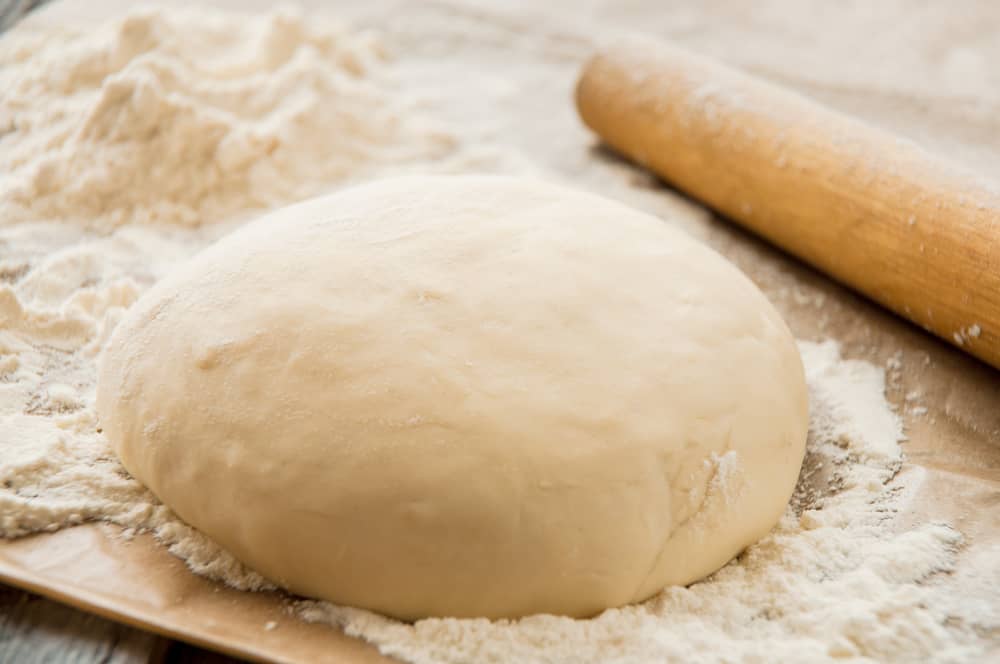
Here’s the step process on how to make authentic Neapolitan pizza dough.
-
Gather Equipment
Gather all the equipment you need.
-
Get Ingredients
Keep all of your ingredients in separate bowls and ready to use
-
Activate Yeast
Activate the yeast at 100°F for about 15 minutes. If the yeast is dead, discard the mixture and start again with fresh yeast. If you are using Instant Yeast disregard this step.
-
Mix Dough
Follow the order of ingredients and mix the dough. You can mix the dough using a stand mixer or you can mix it by hand.
-
Knead Dough
Knead dough by hand for about 1 to 3 minutes, and form a big tight dough ball.
-
First Fermentation – 1 of 3
Place ball of dough into a glass bowl for proofing
-
First Fermentation – 2 of 3
Cover the dough with plastic wrap and let it rest for 1 to 1-1/2 hrs.
-
First Fermentation – 3 of 3
After time passes, the dough should be inflated like a balloon.
-
Degas Dough and Divide into Doughballs
Punch down the center with your fist.
-
Shape into Doughballs
Divide into doughballs. Is best to weigh each dough ball, so you get equal size dough balls.
-
Second Fermentation
Doughballs should be nice and tight and not touch each other. Place dough balls in the refrigerator from 8 to 24 hrs. You can also freeze them for later use.
DOUGH BALLS ARE READY
When you are ready to shape the balls into a pizza crust, you need to:
- Remove the balls from the refrigerator and let them sit for about 1 hr. to take the chill out. This will make the dough balls easier to shape.
- Complete shaping and proceed to bake as directed in the recipe you are using.
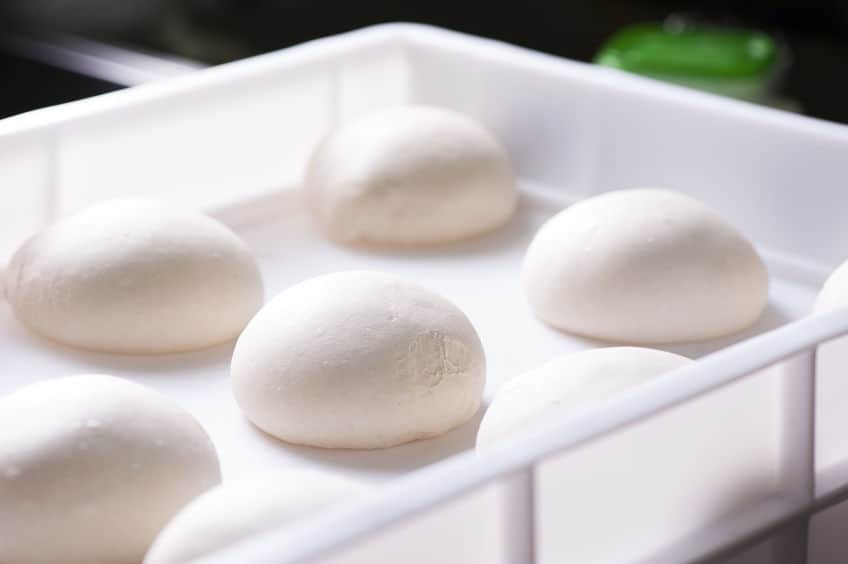
STORING DOUGH BALLS
If you have extra dough balls that you are not going to use immediately, you can freeze them. To freeze them, dust them lightly with flour, place each one in a quart-size zip-lock bag, suck out the air, seal, and freeze for up to 3 months.
Thaw the dough in the refrigerator, and then let it warm up at room temperature for 1 to 3 hours before using it.
Are You Having Trouble Making Pizza Doughballs?
Here’s What You Can Do
We love that you can now buy fresh pizza dough balls straight from New York City. The perfect size for a medium pizza. They will ship frozen, just thaw and make the most wonderful pizza in minutes.
New York Pizza is different. The crust is completely unique. Airy, Crispy, and a taste that can’t be duplicated. Dairy-Free - Soy Free. Pizza Dough is made fresh and frozen only for transportation. All-Natural ingredients - Flour, Water, Olive Oil, Salt, Sugar and Yeast
Price includes Express Shipping. 1 Doughball creates a 12 to 14-inch pie depending on how thick you like the crust.
Complete instructions with each order. Taste the difference New York Water makes!
The Last Slice
We hope this recipe gives you a starting point on your pizza journey. If you want to learn more on how to make homemade pizza, please visit our Learn section for useful tips and much more.
So, are you ready to start making your dough balls?
Let us know, we would love to know. If you are having trouble, send us an email, we would love to help you.
Get your Recipe Card
Print and save your favorite recipe.
Neapolitan Dough Base Recipe
Equipment
Ingredients
- 500 g Caputo Pizza Flour or Bread Flour 00 Type
- 325 g Water
- 5 g Active Dry Yeast
- 10 g Fine Sea Salt
IMPORTANT NOTE: You can hover over the "Servings" box above to automatically recalculate the proportions according to the amount of dough balls you need.
Substitutions:
If you can't find Caputo Pizza Flour you may use any of the following:
- 500 g King Arthur Bread Flour
- 500 g Your Favorite Bread Flour High Protein 14%
If you want to use Instant Yeast substitute with the following:
- 4.9 g Instant Yeast
Instructions
Activate Yeast
- In a mixing bowl add about 20g of water and yeast and whisk vigorously for 15 seconds. The yeast should dissolve in the water and the mixture should foam. If it doesn’t and the yeast granules float, the yeast is “dead” and should be discarded. Note: If you are using instant yeast, mix dry ingredients first, starting the flour and the yeast to evenly distribute. Do not add salt at this stage, only after incorporating the water. (After Step 2)
Mix the Dough
- Combine the flour with the yeast mixture and the remainder of the water using the paddle attachment mix on slow speed for 1 minute, or until all the ingredients are evenly distributed and fully hydrated, all the water should be absorbed. Note: if your electric mixer does not have a paddle attachment you can use the dough hook attachment instead-but allow longer for the mixing.
- After 1 minute, keep mixing with the stand mixer fitted with the dough hook. With the mixer running on the lowest speed, pour in most of the water, reserving about 2 tablespoons, followed by the yeast and water mixture. Pour the reserved water in the yeast bowl, swirl it around to dislodge any bits of yeast stuck to the bowl, and add to the mixer.
- Continue to mix the dough at the lowest speed for about 1 minute, until most of the dough comes tighter around the hook. Stop the mixer. Using your fingers to pull away any dough clinging to the gook and scrape the sides and bottom with a bowl scraper or rubber spatula.
Knead the Dough
- Knead the dough in the mixer on low speed for 5 – 7 minutes.
- Using the bowl scraper, transfer the dough to a lightly floured work surface, then knead it for 1 to 3 minutes, until smooth. If the dough is too sticky to knead, sprinkle it with just enough flour to allow you to work with it.
First Fermentation
- Cover the dough with plastic cling or a damp towel; and let it rest at room temperature for 1 to 1 1/2 hrs. This is the first fermentation.
Degas the Dough
- After the first fermentation you need to degas the dough by punching it down with your fist releasing all of the accumulated air.
Divide into Doughballs
- Remove the dough from the bowl and form the dough into balls.
Second Fermentation
- Set the balls in a dough proofer on a half sheet pan(s), spacing them about 3- 4 inches apart. Place the lid on the dough proofer or wrap the pans(s) airtight with a double layer of plastic wrap, sealing the wrap well under pans(s). Put the pan(s) in a level spot in the refrigerator and refrigerate for 8 to 24 hours.Note: Form dough balls, and place each dough ball into an oiled freezer bag, seal, and freeze. These will keep for up to three months.
Take this recipe to the next level with the following ingredients:
You'll love this Italian Mozzarella Di Buffala cheese for its slightly elastic consistency, with a thin and shiny rind that is porcelain white. The aroma of this mozzarella is enhanced at cutting, with the appearance of a slight whey draining with a scent of milk enzymes.
A smooth extra virgin olive with pleasant notes of fruit and aromas of cut grass, made from three varietals of Italian olives - Frantoio, Leccino, and Moraiolo. Hand-harvested and produced by Il Boschetto in the Maremma region of Italy, in the medieval Tuscan village of Castiglione Della Pescaia, Guglielmo di Malavalle Multicultivar Extra Virgin Olive Oil is a young, fruity oil with beautiful green-yellow color and hints of artichokes and wildflowers.
The summer variety of the black truffle, these delicious mushrooms are subtle and mildly flavored. They’re in season from May through August, and while they lack the intensity of the winter or fall types, they are a great way to add some nice truffle flavor to light summer and spring recipes - without breaking the bank. In shape and looks, they look the same as the winter variety, but you’ll notice that they don’t have that intense aroma. Slice thinly and warm them up with truffle butter or truffle paste to add some extra flavor, or use them to bring the look of fresh truffles to dishes.
For More, Check Out the Gourmet Food Store
Homemade Pizza FAQs
How to Start Making Pizza?
Making pizza at home is actually very simple, and anyone can do it. If you don’t have a mixer, you can still make the dough by hand.
Check our guide on How to Get Started to begin your pizza-making journey.
Do I need a pizza oven to make pizza at home?
No, you can make pizza in a regular kitchen oven, and these days you can even make pizza on your stove or your grill.
Check our Recommended Oven Section for the oven that best suits your needs.
What is the best flour for pizza?
The best flour for pizza is flour which contains a high-protein content. Of course, it will depend on the kind of oven you have.
Regarding the brand, we’ve found that Caputo Chef’s Flour works best for home ovens, while Caputo Pizzeria works best for high-temperature ovens.
Check the Best Flour for Pizza article to learn more about flour and why we think Caputo is best.
How long should I bake pizza?
The time to cook your pizza will depend on the kind of pizza you are making and the kind of oven you have.
The lower the temperature, the longer will take to cook your pizza. On average, it will take 12 to 15 min to cook pizza in a 500F oven.
For details on specific cooking times and temperatures, check the Guide to Oven Temperature and Cooking Time article.
What kind of yeast should I use for pizza?
To make pizza dough, you can use any yeast you have available. You can use fresh, instant, or active dry yeast.
The amount of yeast to use will vary depending on which one you use.
We found that active dry yeast gives the best results. To find out why we think is best to check Yeast: Here is What You Need to Know article.
What is the best hydration percentage?
On average, water should be 65% of the total weight of flour. For example, if your recipe calls for 500g of flour, you should add 325g of water (500 x .65 = 325).
Of course, the temperature of the oven will also have an impact on your final result.
Check our guidelines and our Baker’s Percentage Charts for the best results.
For more pizza questions, check our Pizza FAQs Page or Contact Us.
Check Amazon’s Pizza-Making Must-Haves
Why have two pizza peels when you can only have one. This pizza peel surpasses the benefits of wood peels with the convenience of a metal peel. It's made entirely from anodized aluminum for a lightweight design that's incredibly durable, too. It's designed to be used frequently in high-heat pizza ovens.
The Etekcity Lasergrip 800 Digital Infrared Thermometer is a versatile and reliable tool for accurate temperature measurements. Its non-contact design allows you to measure temperatures from a distance, making it safe and hygienic for various applications. With a wide temperature range of -58°F to 1382°F (-50°C to 750°C), this infrared thermometer is perfect for both everyday cooking needs and professional uses.
The built-in laser pointer helps you target the specific area you want to measure, ensuring precision and consistency. Whether you're grilling, cooking, or performing household maintenance, the Etekcity Lasergrip 800 provides fast and accurate temperature readings with ease.
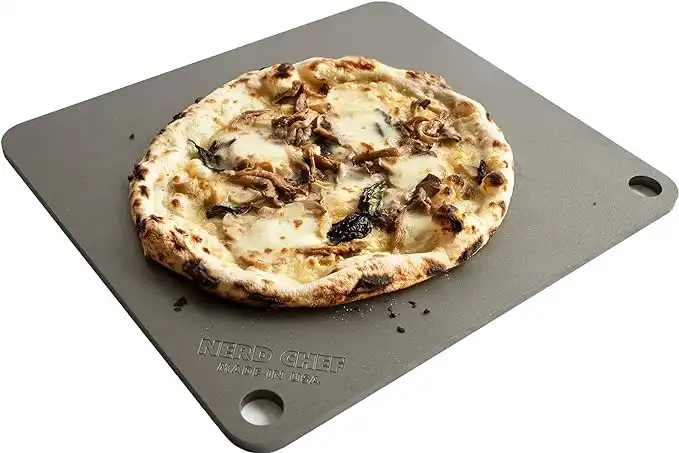 NerdChef Steel Stone
NerdChef Steel Stone
Making great crusts traditionally requires a 700-1000F wood-fired oven. Nerdchef Steel Stone replicates that performance in a home oven with its super-high heat transfer ability - transferring heat energy 20 times faster than ceramic. It creates beautiful and crispier crusts, gorgeous blistering throughout, and it cooks faster.
The Chef's flour is a general-purpose, high gluten flour that works well for many recipes. "Tipo 00" refers to how refined the flour is. Chef's Flour is best for those who want to bake in their traditional home oven up to 500 degrees Fahrenheit!
Enjoy!
Not a PRO? Not a Problem!
Take a pizza class to bring your pizza skills to the next level,
so you can be a PRO!
Related Posts

Costco Pizza Delivery: Find How You Can Get It Now!
the PROs
People go to Costco’s food court for many different reasons, but the cheesy slice of pizza they serve is among …

Pizza for Beginners: Don’t Buy Pizza, Make It! Here’s How to Get Started!
the PROs
You have this idea that you want to make pizza at home as opposed to ordering it, but where do you start? Don’t worry! Here you will find answers and directions to all your questions.

Pizza Toppings Under Cheese or Over Cheese? [Why the Order Matters]
the PROs
Is Pizza Cheese on Top or Bottom? Hey pizza lovers, are you wondering if you should layer pizza toppings under …
Newsletter
Subscribe to our Recipe of the Week newsletter and receive our partners’ latest recipes, tips, and discount offers.
Keep in Touch!
